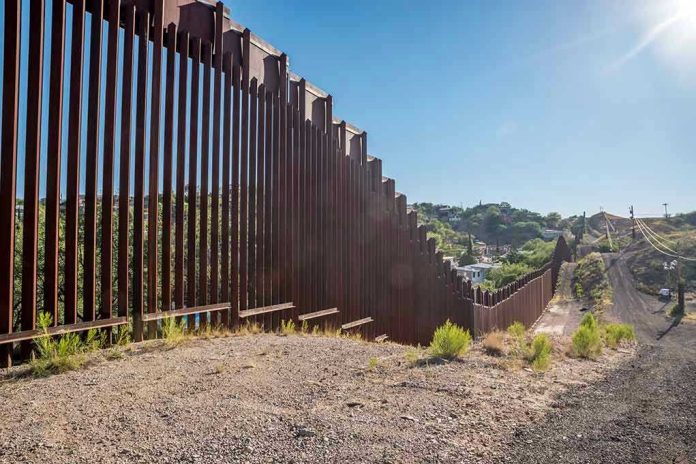
Chinese illegal crossings at the southern border exploded under Biden, raising national security alarms, and now the Trump administration is finally taking the gloves off—so why did it take so long for America’s leaders to get serious?
At a Glance
- Encounters of Chinese nationals at the southern border skyrocketed from 2,200 in 2022 to over 38,000 in 2024
- Experts warn these crossings pose a national security threat, with some raising concerns about possible Chinese Communist Party exploitation
- Trump’s new administration is moving fast, issuing executive orders, and aiming for record deportations
- Human smuggling networks and criminal rings have exploited the border chaos, with Chinese migrants allegedly used in criminal enterprises
Chinese Illegal Immigration Surge: The Numbers Tell the Story
Encounters with Chinese nationals at the U.S.-Mexico border didn’t just increase—they exploded. In fiscal year 2022, border officials encountered about 2,200 Chinese migrants. By 2023, that number soared to 24,300. And in 2024, the figure jumped yet again, topping 38,000. That’s the kind of exponential growth that would make any rational person ask: what on earth was the previous administration doing besides holding the border door wide open?
Many of these migrants didn’t stumble across the border by accident. Social media, including TikTok, has become a virtual smuggler’s guidebook, offering tutorials on how to exploit the border’s weak points. Criminal smuggling networks—snakeheads—profited handsomely by trafficking desperate Chinese nationals, many of whom were fleeing economic hardship, political repression, or simply seeking a better life. But when you have over 38,000 crossings in a single year, you have to wonder—how many are really just looking for the American dream, and how many might have darker motives?
National Security Warnings and Criminal Exploitation
Law enforcement and security experts have been raising red flags, warning that this surge is not just a humanitarian challenge—it’s a national security crisis. Lora Ries from the Heritage Foundation called the spike a “national security concern,” and she’s far from alone. The Department of Justice recently charged seven Chinese nationals with running a massive marijuana trafficking operation, using smuggled Chinese migrants as forced labor. In June 2024, ICE deported 122 Chinese nationals on a “special high risk charter flight”—many of them convicted of serious crimes. You don’t need to be a border hawk to see the danger in this trend.
Border communities and law enforcement are stretched to the limit. The sheer volume of crossings, coupled with the complexity of transnational crime, has created a perfect storm for criminal exploitation and security vulnerabilities. The big question that keeps coming up: with the Chinese Communist Party’s history of using every tool at its disposal, can anyone say with a straight face that this migration surge isn’t being exploited for strategic gain?
The Trump Administration’s Rapid Response: Taking the Gloves Off
After years of hand-wringing and half-measures, the Trump administration is finally treating the border crisis like the emergency it is. On his first day back in office, President Trump issued Proclamation 10886, declaring a national emergency at the southern border. The new administration’s goal: deport one million immigrants a year—more than triple the previous record. Expedited removal has been expanded nationwide, daily arrest quotas established, and enforcement is now permitted even at previously protected sensitive locations such as schools and churches. Local police are being roped in as force multipliers, thanks to the rapid expansion of 287(g) agreements. Sanctuary jurisdictions are being threatened with civil and criminal penalties and funding cuts if they refuse to get in line.
Policy changes are sweeping and unapologetic. Discretionary immigration pathways from the previous administration have been systematically dismantled. Refugee admissions are suspended. Parole programs and Temporary Protected Status for nationals of various countries have been revoked or are under review. The focus has shifted from vague notions of compassion to the hard reality of national security and the rule of law—a shift that many Americans have been demanding for years.
What Happens Next: Security, Policy, and the Fight for America’s Borders
The short-term effects are clear: law enforcement is ramping up, deportations are rising, and the political debate over border security is reaching a fever pitch. In the long run, America is likely to see increased scrutiny of Chinese nationals, tougher immigration policy, and perhaps a new era of diplomatic tension with Beijing. But for border communities, law enforcement, and everyday Americans worried about their safety, these changes can’t come soon enough.
Chinese migrants themselves—especially those exploited by smugglers or criminal networks—face an uncertain future. Meanwhile, the costs of enforcement, detention, and deportation continue to climb. The broader effect? A renewed focus on the threats posed by transnational crime, human trafficking, and illicit drug production, all fueled by border chaos that was allowed to spiral out of control for far too long. The message from the American people is clear: enough is enough. Secure the border. Enforce the law. Put American security first.
Sources:
Chinese Immigrants in the United States
Foreign Born: Number and Share of U.S. Population at All-Time Highs, January 2025
What We Know About Unauthorized Immigrants Living in the U.S.







